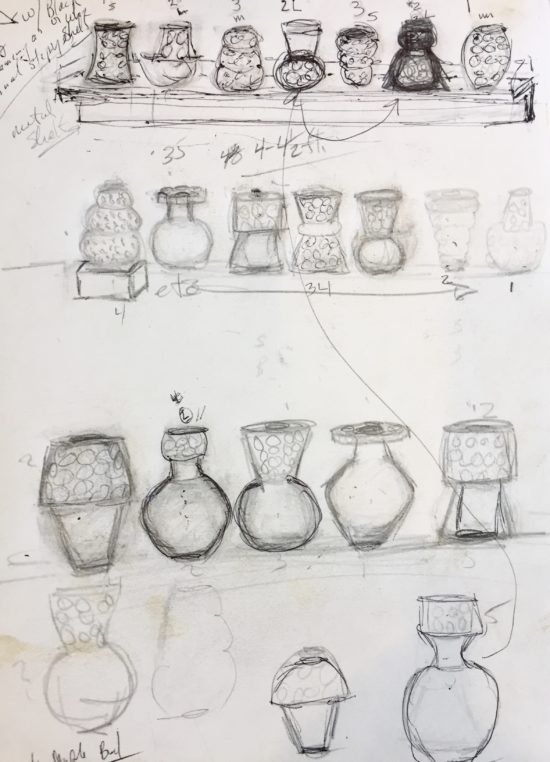
28 Feb The process behind a finished piece
“Painting is easy when you don’t know how, but very difficult when you do.” ~Edgar Degas
It’s easy to see finished art and not fully realize the hours (and years!) of thought and skill involved in its making.
I recently escaped Minnesota for a few days of warmth and sunshine with an old friend. In St. Petersburg, FL, we spent time at two museums—the Dali museum and Chihuly Glass. Up close Salvador Dali’s surrealistic canvases revealed an attention to detail and skill with a brush that I had not appreciated before. Dale Chihuly’s magical glass sculptures were a breathtaking celebration of color. But what intrigued me most was seeing the evolution of both artists through their work and through their sketches and drawings.
As you may have experienced during a visit to Ripple River Gallery, I can often tell you more about an artist than you ever thought you might want to know! That’s because the gallery gives me license to ask questions about process, the artist’s choice of media, their personal philosophy and what inspires their work. I like to know how things are made, but more especially, I like to understand the artist’s path and their thoughts behind a piece of pottery, a painting or a weaving.
Sometimes we can tell you what an artist’s studio looks like, how and where they learned their craft and what the concept behind a particular piece might be. It may not seem important in the short run, but I think that knowing whose hands made a piece offers a connection—a human connection—that mass-produced goods can’t offer.




Sorry, the comment form is closed at this time.